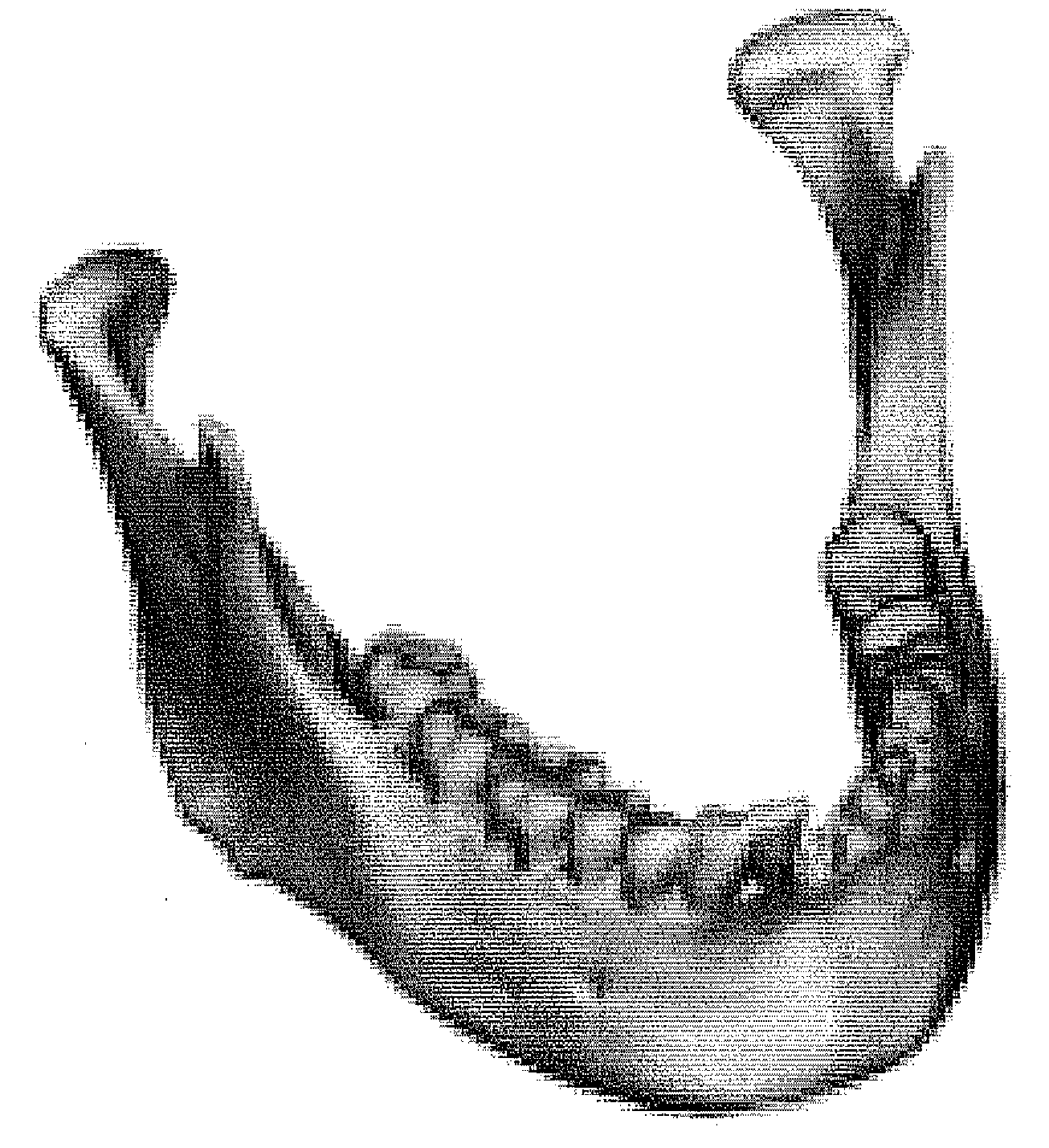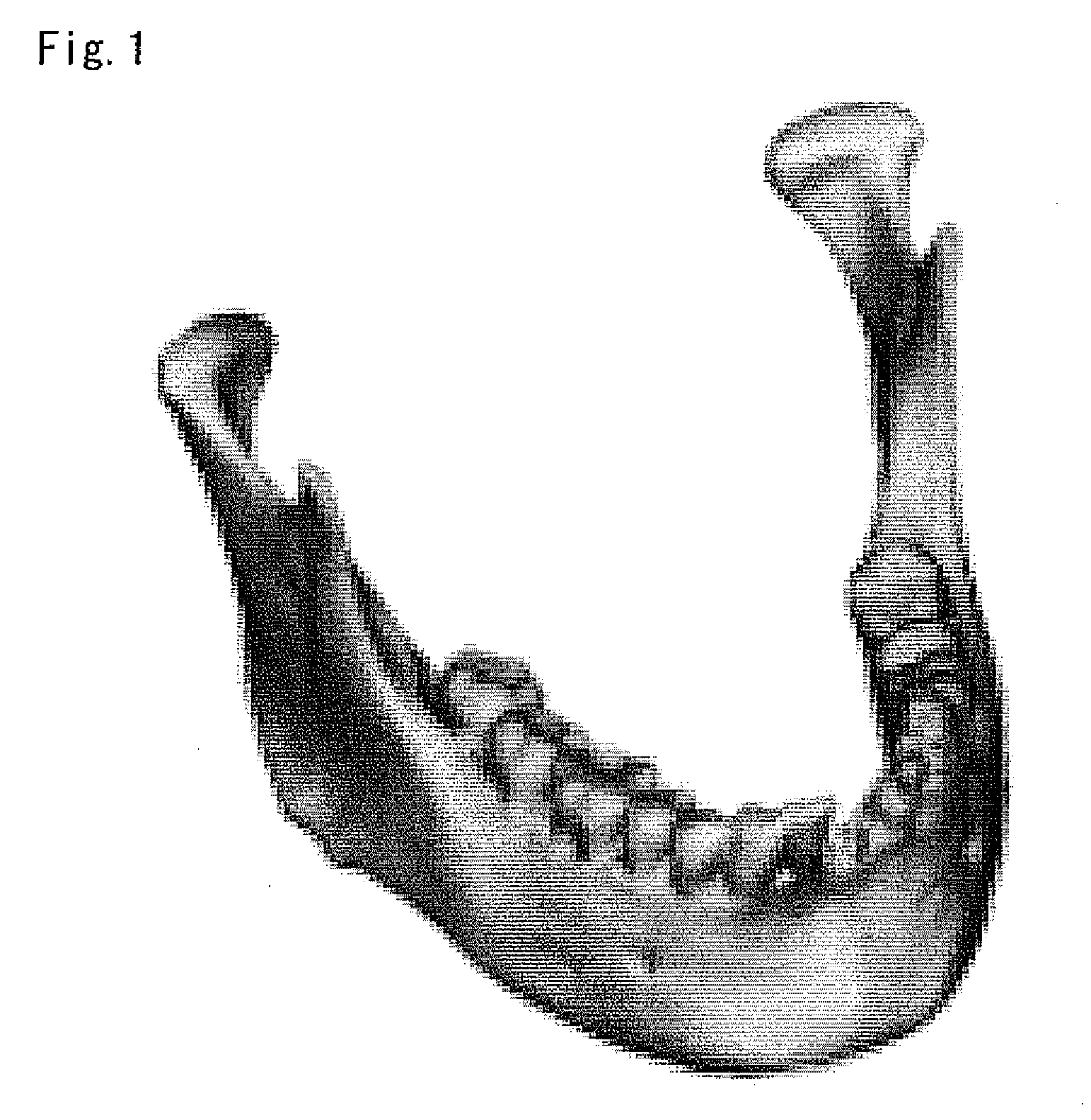Figure-forming composition, process for production of figures in three dimensions by using the composition and process for production of three-dimensional structures
- Summary
- Abstract
- Description
- Claims
- Application Information
AI Technical Summary
Benefits of technology
Problems solved by technology
Method used
Image
Examples
example 1
[0106]The present invention is explained in examples set forth hereinafter. The present invention, however, is not specifically limited to the examples, and various applications can be made based on the common general technical knowledge of the person skilled in the art.
[0107]The following materials were used as raw materials: Calcined gypsum as hemihydrate gypsum produced by San-Esu Gypsum Co., Ltd.; polyvinyl alcohol (PVA) produced by Noppon Gousei Co., Ltd.; dihydrate gypsum produced by San-Esu Gypsum Co., Ltd.; potassium sulfate (first grade) produced by Wako Pure Chemical Industries Ltd.; sodium chloride (first grade) produced by Wako Pure Chemical Industries Ltd.
[0108]In this example, 95 weight parts of hemihydrate gypsum and 5 weight parts of PVAZ-100 produced by Nippon Gousei Co., Ltd. was used as figure-forming composition, and 0.5 weight parts of dihydrate gypsum was used as hardening accelerator. The figure-forming composition was powder state, and was sifted for uniform ...
example 2
Autoclave Test
[0113]This example was performed to examine the tolerance of the three-dimensional figure against autoclave processing, and the preferred relationship between PVA and cross-linking treatment. For example, EDA 5% means: having sprayed water on the surface of a dried three-dimensional figure and dried the figure, soaking the dried three-dimensional figure in 5 volume % aqueous solution of ethylenediamine. The evaluation of the autoclave tolerance was as follows: (◯): a three-dimensional structure (in this example, a living body model of an upper jaw was produced) could be taken out from autoclave apparatus after autoclave processing was performed at 115° C. for 30 minutes and then left until the temperature inside the autoclave became 60° C.; (x): the three-dimensional structure could not be taken out from the autoclave apparatus under the condition above described. The results are shown in table 1. In the table, “-” means that test was not performed. The kinds of PVA ar...
example 3
Crack Test
[0115]In order to examine if the machinability is similar to that of bones, crack test was performed. A living body model of a thigh bone was produced, and a test piece was made from the living body model (three-dimensional structure). Four nails (diameter 3.2 mm) were driven in the test piece in a row, and examined if cracks appear by visual inspection. FIG. 2 is a figure of 3D CC image for forming a three-dimensional structure of a thigh bone. Namely, in this example, cross-sectional views of each layer were obtained based on the three-dimensional structure of the object shown in the FIG. 2. And based on the resultant cross-sectional views, three-dimensional figure was formed by duplicating the shape of the thigh bone shown in FIG. 2. In this way, a three-dimensional structure was produced. The results were rated as follows: (◯): cracks did not appear; (x): cracks did appear. The results are shown in table 2. In addition, machinability test on the resultant three-dimensi...
PUM
| Property | Measurement | Unit |
|---|---|---|
| Volume | aaaaa | aaaaa |
| Fraction | aaaaa | aaaaa |
| Fraction | aaaaa | aaaaa |
Abstract
Description
Claims
Application Information
 Login to View More
Login to View More - R&D
- Intellectual Property
- Life Sciences
- Materials
- Tech Scout
- Unparalleled Data Quality
- Higher Quality Content
- 60% Fewer Hallucinations
Browse by: Latest US Patents, China's latest patents, Technical Efficacy Thesaurus, Application Domain, Technology Topic, Popular Technical Reports.
© 2025 PatSnap. All rights reserved.Legal|Privacy policy|Modern Slavery Act Transparency Statement|Sitemap|About US| Contact US: help@patsnap.com



